TL;DR:
- If you teach math, consider what technology tools you use. Ask yourself: Do they encourage active learning between students? Do they give you increased interaction both with and between students?
- 2 tech tools that use VMI (visualize, multimodal learning, and interaction) are Desmos and Flashcard Factory.
Math Tech Tools
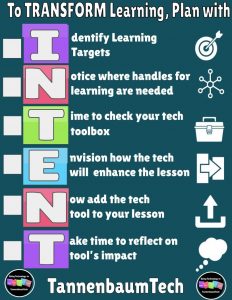
Each month, I get so excited to share with my Teach Better blog family another way to #techbetter. I want to continue to help all of you grow in the ways that you use technology in your school communities. This month, I decided to focus on an area of technology integration that I feel doesn’t always get enough love or attention- using technology with math. Even if you don’t teach math, I hope that this will help you as you “Plan with INTENT” by seeing some amazing ways to put handles on learning in the content area of math.
Tech Up the Math
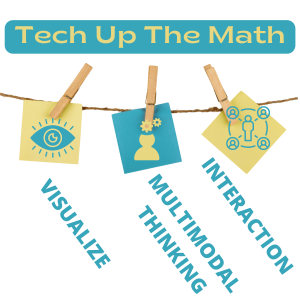 Back in November 2021, I wrote a seven part blog series on my website, TannenbaumTech.com, called #TechUpTheMath. In that series, I began by sharing the three characteristics that I believe transformative experiences in math should have. By having one or more of these characteristics, the tech tool will truly #techupthemath.
Back in November 2021, I wrote a seven part blog series on my website, TannenbaumTech.com, called #TechUpTheMath. In that series, I began by sharing the three characteristics that I believe transformative experiences in math should have. By having one or more of these characteristics, the tech tool will truly #techupthemath.
- Visualize: Allows students to visualize the math concept in a way not possible without the technology.
- Multimodal Learning: Many of these applications offer students more than one way to share their thinking.
- Interaction: Many of these programs empower our students to interact with their classmates’ or teacher’s math thinking.
These three characteristics take us back once again to Standard 5 of the ISTE standards for Educators:
Designer: Educators design authentic, learner-driven activities and environments that recognize and accommodate learner variability.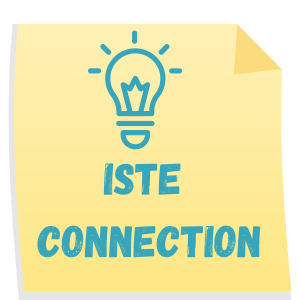
- 2.5a Use technology to create, adapt and personalize learning experiences that foster independent learning and accommodate learner differences and needs.
- 2.5.b Design authentic learning activities that align with content area standards and use digital tools and resources to maximize active, deep learning.
- 2.5.c Explore and apply instructional design principles to create innovative digital learning environments that engage and support learning.
Getting Started
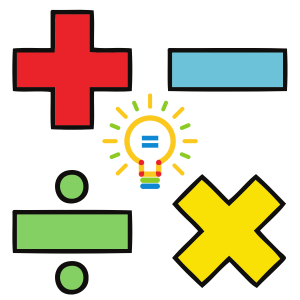
If you teach math, consider what technology tools you use. Do they encourage active learning between students? Do they give you increased interaction both with and between students?
In this month’s blog post, I will be highlighting the amazing work of the classrooms in my school, providing you a window into how two tech tools that have VMI can be used in transformative ways. Even though all of my examples will be in the elementary setting, that does not mean they can only be used with our younger students. These tools can be used in any mathematical classroom setting.
Math Tech Tools: Desmos
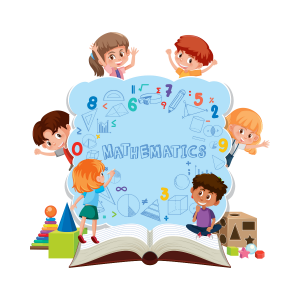
If you have never used Desmos, you are truly missing out. Desmos is so much more than just a graphing calculator and it is a FREE tool. I love how Desmos’ Classroom Activity Builder engages students in a process of math discovery. In addition, students can also complete polygraphs where they use math language while describing math concepts. These activities help students to scaffold math concepts and promote math discourse. They do this by creating collaborative learning experiences where students can explore math together. This includes both ready made templates and the ability to custom make your own activities.
Desmos in Action
 One of my favorite activities that my students have done this school year was the Fraction Challenge. My third grade students worked collaboratively with a partner to solve two puzzles involving fractions. This task was an Open Middle task where they needed to use the digits 1-9 once to create the problem that first had the greatest sum and second, had the smallest difference. This activity was a great way for my students to “flex their math muscles.” They had to persevere through a set of difficult tasks, work together, and build on each other’s thinking. What a great example of interaction this was! In addition, activities like these demonstrate the following ISTE Standards for Students:
One of my favorite activities that my students have done this school year was the Fraction Challenge. My third grade students worked collaboratively with a partner to solve two puzzles involving fractions. This task was an Open Middle task where they needed to use the digits 1-9 once to create the problem that first had the greatest sum and second, had the smallest difference. This activity was a great way for my students to “flex their math muscles.” They had to persevere through a set of difficult tasks, work together, and build on each other’s thinking. What a great example of interaction this was! In addition, activities like these demonstrate the following ISTE Standards for Students:

- 1.4c Innovative Designer: Students exhibit a tolerance for ambiguity, perseverance and the capacity to work with open-ended problems.
- 1.7 Global Collaborator: Students contribute constructively to project teams, assuming various roles and responsibilities to work effectively toward a common goal.
[scroll down to keep reading]
Math Tech Tools: Flashcard Factory

Flashcard Factory is a hidden gem that is FREE by Pear Deck. Traditionally used just for vocabulary, I am finding that Flashcard Factory is an extremely effective math learning tool as well. Flashcard Factory allows students to collaboratively create flashcards with a partner; one student uses the drawing tools while the other student uses the text tool. You might not think about using this for math, but if you don’t, you are truly missing out. One student can solve a problem given to them while another student creates a matching word problem or shares the answer. What a great example of multimodal and interaction!

One of my favorite uses of Flashcard Factory is to teach this standard: Create and solve single-step and two step practical problems involving… This can include any skill—addition and subtraction or multiplication or division, and include specific areas such as fractions, decimals, measurement, etc. As I teach using this tool, I also start with the premise that Peary Foreman, the pear with the hard hat and the mustache, has asked them to work for his factory. He expects his workers to work collaboratively and effectively. As a result, he puts them in two teams: the day shift and night shift. Peary Foreman puts them in pairs and then they get to work.
Flashcard Factory in Action
My third grade students used this idea while studying multiplying 2 digit by 1 digit numbers. One student showed how to solve the problem while the other student wrote a word problem. After about 15 minutes, students came back together for quality control where we evaluated the cards made anonymously and discussed whether they met the standard set or not.
Then, if your school district allows the use of Gimkit, you can export the cards you made to Gimkit. If not, you can save their cards as PDFs or print them.

This is another great example of interaction and addresses this ISTE Standard for Students:
- 1.7 Global Collaborator: Students contribute constructively to project teams, assuming various roles and responsibilities to work effectively toward a common goal.
Not to mention these other great #techupthemath programs:
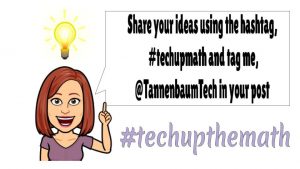 These two programs are just two of the six programs I shared in my #techupthemath blog series. Other programs include Flipgrid, Gizmos, Wixie, and Pear Deck. How will you #techup the math if you teach math? If you don’t, how can you use the ideas in this blog post to help you plan with INTENT? The possibilities are exciting when you use technology to transform learning in your educational setting. Share your ideas with the #techbetter and #techupthemath.
These two programs are just two of the six programs I shared in my #techupthemath blog series. Other programs include Flipgrid, Gizmos, Wixie, and Pear Deck. How will you #techup the math if you teach math? If you don’t, how can you use the ideas in this blog post to help you plan with INTENT? The possibilities are exciting when you use technology to transform learning in your educational setting. Share your ideas with the #techbetter and #techupthemath.
About Debbie Tannenbaum
Debbie Tannenbaum is an Elementary School Technology Specialist in Fairfax County, VA. An educator with over twenty years of experience, Mrs. Tannenbaum is completing her second year in this role, where she supports both staff and students to integrate technology tools into instruction through both co-teaching sessions and weekly technology classes. Mrs. Tannenbaum is also an avid blogger and shares her thoughts and reflections on her website: Techy Notes. You can also find her on Twitter and Instagram at @TannenbaumTech.




